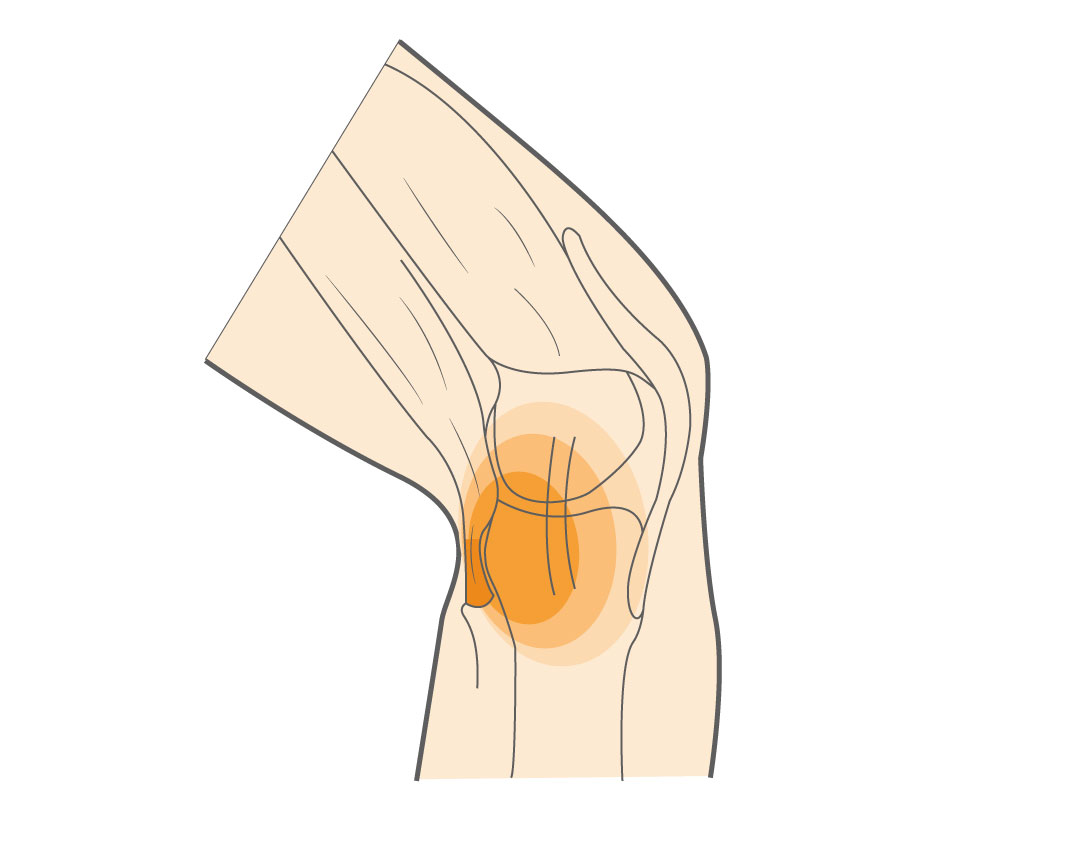The hamstrings are a group of muscles and tendons at the back of your upper leg. There are three muscles: the semitendinosus, the semimembranosus, and the biceps femoris. These are very strong muscles that are essential for jumping, running, and walking. Tendons attach the hamstring muscles to the hip bone, the shaft of the femur (the upper leg bone), and the top of the tibia and fibula (the lower leg bones). In sports, the hamstring tendons can become painfully inflamed, a condition called hamstring tendonitis of the knee.
Hamstring Tendonitis of the Knee Symptoms & Treatment
The hamstrings are a group of muscles and tendons at the back of your upper leg. There are three muscles: the semitendinosus, the semimembranosus, and the biceps femoris. These are very strong muscles that are essential for jumping, running, and walking. Tendons attach the hamstring muscles to the hip bone, the shaft of the femur (the upper leg bone), and the top of the tibia and fibula (the lower leg bones). In sports, the hamstring tendons can become painfully inflamed, a condition called hamstring tendonitis.
Overview
Overview

What causes Hamstring Tendonitis of the Knee?
Hamstring tendonitis is an inflammation of the hamstring tendons. It usually results from overuse or not stretching before and after you run or play. Hamstring tendonitis is also more common among older athletes and in running and cutting sports. This overuse can contribute to hamstring attachment inflammation, particularly around the knee joint.
Hamstring tendonitis is common in these sports:
- Cross country
- Track
- Soccer
- Baseball
- Tennis
Symptoms
The main symptom experienced by athletes with hamstring tendonitis is pain in the back of the knee, in the places where the tendons attach the hamstring muscles to the bones in the leg and hip.
You may feel:
- Pain in the buttocks, along your hamstring, or at your knee
- Pain that is stronger when you do a move or stretch that activates your hamstrings
- Hamstring muscle weakness
When to see a doctor
Make an appointment to see your doctor when you have pain in your buttocks, along your hamstring, or at your knee that doesn’t get better over time. Hamstring tendonitis may sometimes be confused with other conditions, like sciatica, so it’s important to get a correct diagnosis and rule out a knee flexor strain or similar injury.
In order to make a diagnosis, your doctor will ask you about the sports you play and request that you perform certain stretches or moves, and describe if you feel pain. To confirm the diagnosis and rule out other conditions, your doctor may order an X-ray or magnetic resonance imaging (MRI) scan.
Non-operative treatment
Hamstring tendonitis treatment is always non-operative. Conservative treatments may include:
- Rest from your sport and walking for long periods
- Icing the area where you feel pain
- Stretching at home, following your doctor’s recommendations
- Physical therapy while you rest from your sport, and as you begin to get more active
Try these hamstring tendonitis exercises to help address your condition:
Below is a PDF of the Hamstring Tendonitis Exercises Program
Recovery
Full recovery after hamstring tendonitis treatment can take up to six weeks. Most athletes feel substantially better after just several days of rest, but it’s essential to take it slow. Don’t restart practicing your sport until your doctor or physical therapist gives you the green light. Because getting back into the game too soon makes your hamstring tendons vulnerable to re-injury, allowing for the necessary time to heal will be important in the long run.
GET BACK TO WHAT YOU LOVE. FASTER
Frequently Asked Questions
Can I still exercise with hamstring tendonitis?
It depends on the severity of your symptoms. Light, non-weight-bearing exercises such as swimming or stationary biking (if pain-free) may be acceptable. However, you should avoid running, jumping, or any activity that aggravates your pain until a healthcare professional clears you. Focus on rest, gentle stretching, and physical therapy exercises designed to strengthen the hamstrings safely.
How long does it take to recover from hamstring tendonitis?
Recovery time can vary, but most people improve within 4 to 6 weeks with conservative treatment. Some athletes may notice significant relief after a few days of rest and proper care. However, returning to sports too soon increases the risk of re-injury. Always follow your provider’s guidance and gradually reintroduce activity.
Is hamstring tendonitis the same as hamstring attachment inflammation?
Yes, these terms are often used interchangeably. Hamstring attachment inflammation refers specifically to the irritation or swelling at the points where the hamstring tendons attach to the bone, commonly near the knee or buttocks. This inflammation is a hallmark of hamstring tendonitis and contributes to the pain and stiffness experienced in the condition.
How can I prevent hamstring tendonitis from recurring?
Prevention focuses on consistency and balance. Always warm up before sports and stretch afterward. Incorporate hamstring strengthening exercises into your training routine to build resilience. Cross-training with low-impact activities, maintaining flexibility, and listening to your body can go a long way in preventing future flare-ups.

